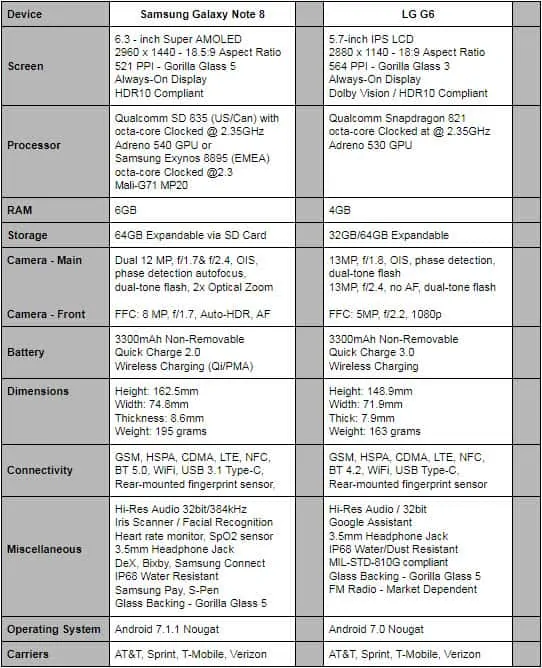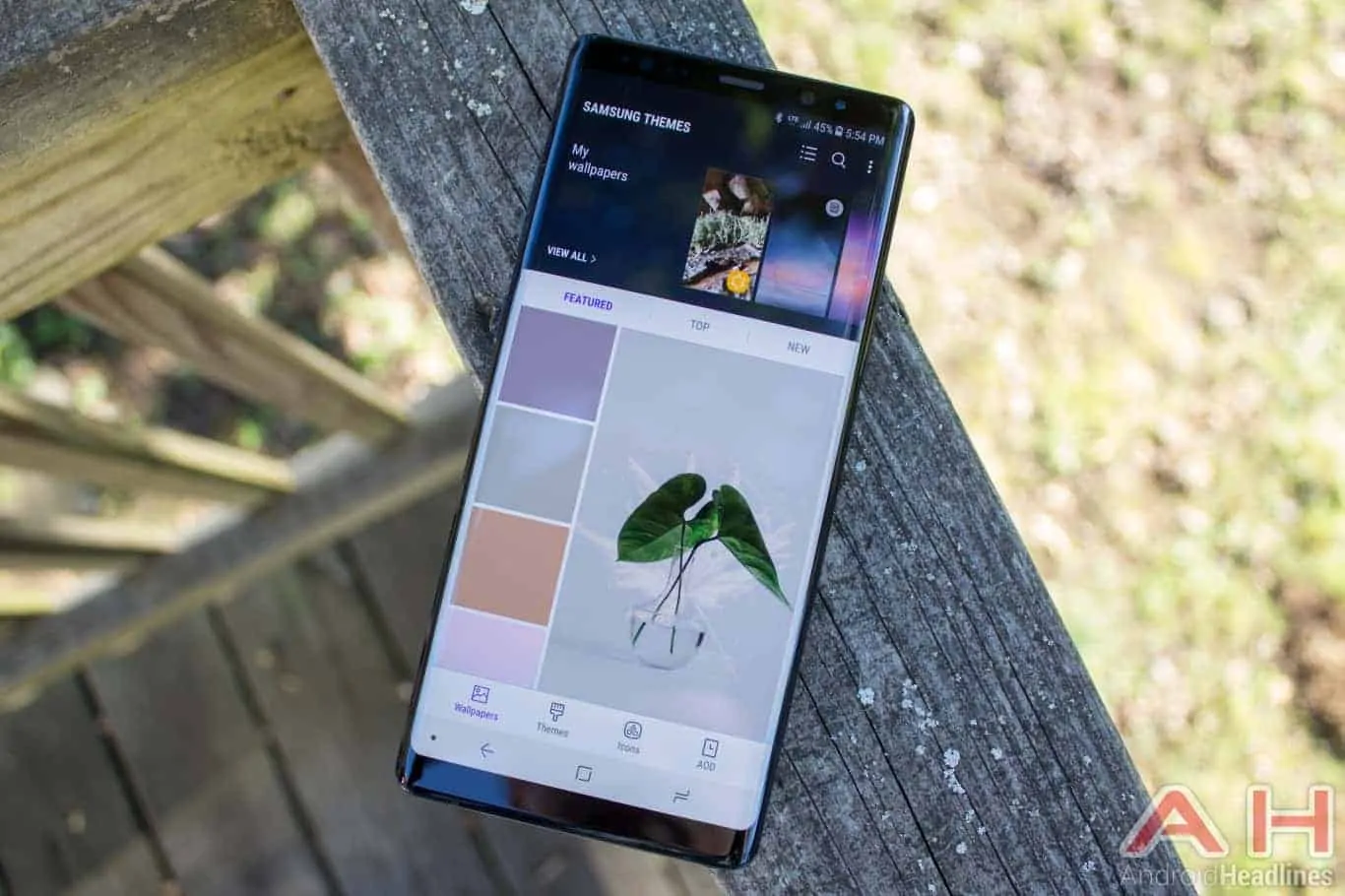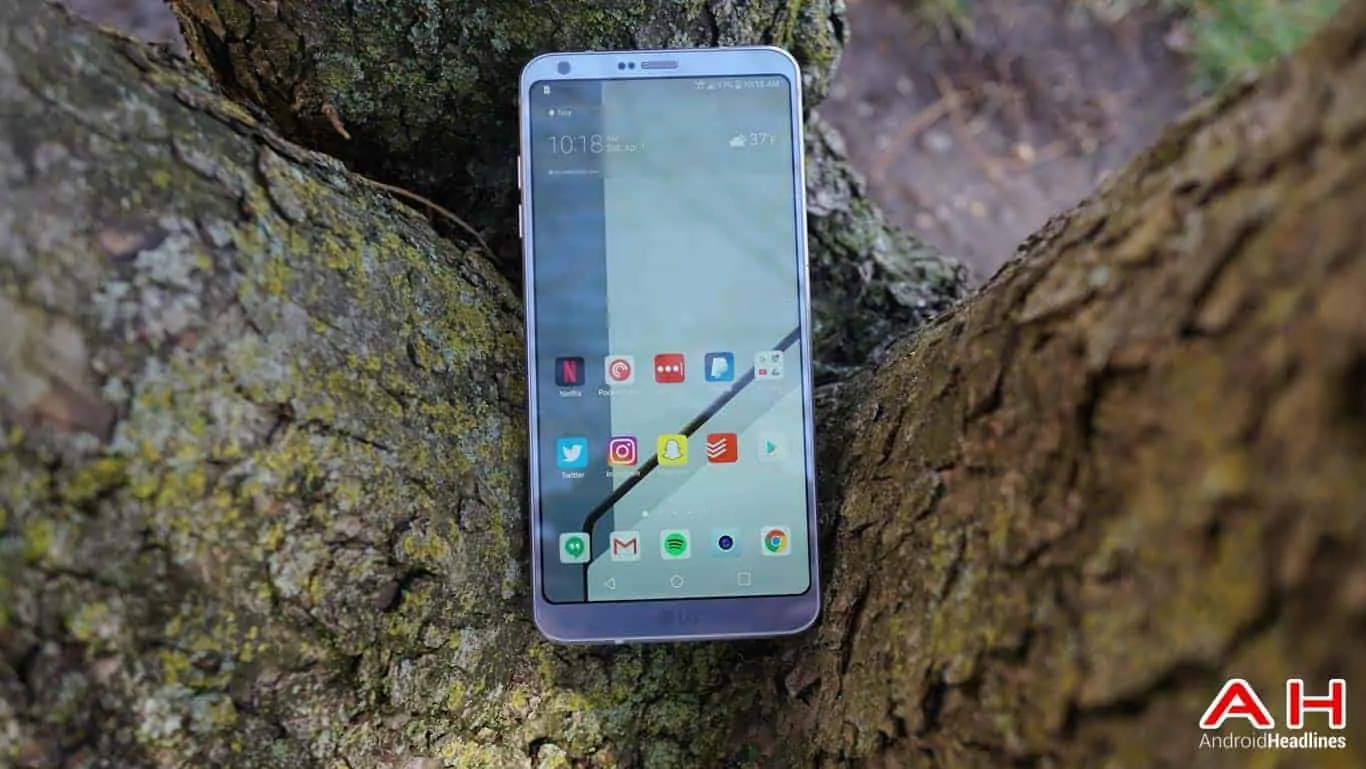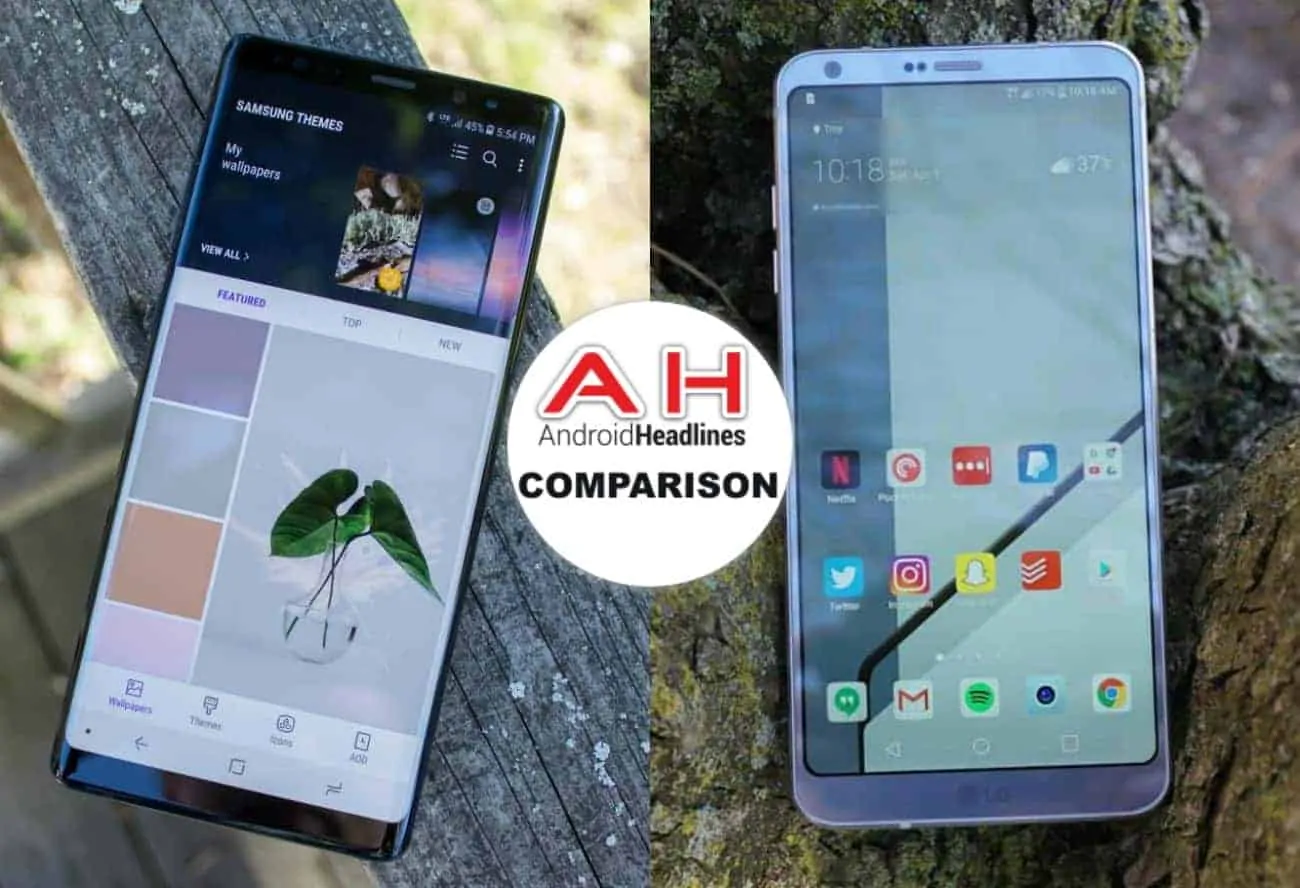Introduction
Do we have an interesting comparison for you today – the Samsung Galaxy Note 8 and the LG G6. Here we have two flagship devices with the Galaxy Note 8 with S-Pen – arguably the best smartphone on the market – and the LG G6, which is certainly not on par with the Note 8, but cheap enough, and feature laden enough for most users. Is the Note 8 worth the extra money? Does the LG G6 have enough power to satisfy the average user? These questions and more are what we hope to answer in this phone comparison. We will first look at the things these two devices may have in common and then look at each individual smartphone in an attempt to select a winner.
Looking down through the spec sheet, there are only a few specifications or features that these two devices have in common. This is to be expected since the LG rushed the LG G6 to market in March, before the Snapdragon 835 chip was available, and the Galaxy Note 8 was available in September. Both devices use the new display ratio of 18:9, the Always-On feature, and Gorilla Glass 5 for protection. They both use a Snapdragon processor, but a different generation. Both have a 64GB memory option and both are expandable via a microSD card. Both use a dual camera arrangement, but the Note 8 takes better photos. Here is something they both have – a 3,300mAh non-removable battery with quick charge and wireless charging. The Note 8 and the LG G6 have NFC, Bluetooth (v5.0 in the Note 8 and v4.2 in the LG G6), a USB Type-C port, and a rear-mounted fingerprint sensor. Both have Hi-Res Audio, a 3.5mm headphone jack, IP68 dust and water resistance, and Gorilla Glass 5 on the back. Both are running Android 7.0 Nougat and both are eligible for an upgrade to Android 8.0 Oreo.
Please take a careful look at the detailed specifications comparison chart below and here you will see just how these two great devices stack up against one another. After that, we will look at each device in greater depth and point out some of its pros and cons. From all of this information, we will try to determine the winner based on specs and execution of design and functions.
Specifications

Samsung Galaxy Note 8
 Samsung’s Galaxy Note 8 follows the Galaxy S8 series by including the new Infinity Display. No more physical home buttons for Samsung – they have moved to onscreen buttons – this move allows the Note 8 to have a very small top and bottom bezel, while the Infinity Display design literally eliminates any left or right bezels. The small bottom bezel has no function to it whatsoever, while the top bezel handles the indicator light, speaker, front-facing camera (FFC), and the iris scanner. The flash for the camera was slipped in between the camera lens and the fingerprint sensor making it a little easier to keep your fingerprints off the camera lens. As long as there is light, you can quickly unlock the phone with the facial recognition or the iris scanner (if you do not wear glasses) – but for those darker times, you can always fall back on using a pin for unlocking the Note 8. Samsung made improvements to the S Pen and software to make it more productive and easier to use. The Galaxy Note 8 is arguably the best looking and most feature-laden smartphone on the market, however, all of this technology comes at a cost of approximately $960.
Samsung’s Galaxy Note 8 follows the Galaxy S8 series by including the new Infinity Display. No more physical home buttons for Samsung – they have moved to onscreen buttons – this move allows the Note 8 to have a very small top and bottom bezel, while the Infinity Display design literally eliminates any left or right bezels. The small bottom bezel has no function to it whatsoever, while the top bezel handles the indicator light, speaker, front-facing camera (FFC), and the iris scanner. The flash for the camera was slipped in between the camera lens and the fingerprint sensor making it a little easier to keep your fingerprints off the camera lens. As long as there is light, you can quickly unlock the phone with the facial recognition or the iris scanner (if you do not wear glasses) – but for those darker times, you can always fall back on using a pin for unlocking the Note 8. Samsung made improvements to the S Pen and software to make it more productive and easier to use. The Galaxy Note 8 is arguably the best looking and most feature-laden smartphone on the market, however, all of this technology comes at a cost of approximately $960.
Samsung increased the Note’s display size from 5.7-inches to 6.3-inches and used their Infinity Display found on the Galaxy S8 series. It carries an 18.5:9 aspect ratio, Super AMOLED technology, and a QHD+ display with a pixel resolution of 2960 x 1440 that generates a density of 521 pixels-per-inch (PPI). Samsung ships the Note 8 with a default set to FHD+ (2220 x 1080) resolution to save battery life, but you can easily go into the display settings to increase it to the QHD+ resolution. The Note 8 uses Samsung’s ‘always-on’ display that saves battery life while making it easier and quicker to check notifications.
The Galaxy Note 8 uses Qualcomm’s latest processor, the Snapdragon 835 octa-core processor for the US/China models with a quad core clocked at 1.9GHz and a quad core clocked at 2.35GHz, paired with an Adreno 540 GPU. For EMEA countries, Samsung uses its excellent Exynos 8895 octa-core clocked at 2.3GHz and the Mali-G71 MP20 GPU for graphics – both processors use the new 10nm technology. The Galaxy Note 8 packs 6GB of DDR4 RAM that contributes to a fast and smooth operation and easy multitasking. It has 64GB of expandable memory via a microSD card.
Samsung finally tipped their toe in the lake of dual cameras and will probably include them on every flagship from here on out. The Note 8 comes with dual 12-megapixel cameras with the primary camera including a large aperture of f/1.7 for low light conditions, PDAF, a dual-tone LED flash, auto HDR, OIS, and 2X Optical Zoom. There is up to 10X by swiping the screen, but that is a digital zoom. The secondary camera specs are the same as the primary’s with the exception of a smaller, f/2.4 aperture. The primary camera handles most all of your photo shots, while the secondary camera comes into play if the user wants to create photos with a bokeh effect – where you focus on one object and then blur the background. Samsung uses a nice sized 8-megapixel FFC with a large f/1.7 aperture, auto-HDR, and autofocus. The non-removable 3,300mAh battery should easily make it through the day and when you do need to charge the Note 8, it features Samsung’s Adaptive Fast Charging and Quick Wireless Charging for both Qi and PMA formats.
The Note 8 has many features, but many will never use some of them. On such item is Samsung Connect that allows you to control Samsung’s appliances. Another is the DeX Station (an optional purchase) will allow you to interface the Galaxy Note 8 with a monitor, keyboard, and mouse to give you a near-desktop experience. Samsung had to develop its own personal assistant, Bixby, to combat Apple’s Siri and Google’s Assistant. The Galaxy Note 8 has Samsung’s popular heart rate monitor and oxygen saturation sensor. One of the best features of the Note 8 is allowing you not only have access to Android Pay but also Samsung Pay that opens up even more possibilities to make mobile payments. The Galaxy Note 8 series is IP68 certified against dust and water. The item that sets the Note 8 apart from other smartphones is its improved S Pen and associated apps – the software gets better every rendition. It arrives with Android 7.1.1 Nougat, measures 162.5 x 74.8 x 8.6 mm, and weighs in at a hefty 195 grams. It is available in Midnight Black, Orchid Grey, Maple Gold, or Deep Sea Blue depending where you are located. The Galaxy Note 8 will cost about $960 outright and is available for purchase from just about everywhere.
LG G6
 The year 2017 brought many changes to LG smartphones – gone is the modular LG G5 design, replace by a completely redesigned LG G6. LG went to a new sleek, all glass design that did away with the removable battery, but added an IP68 certification and wireless charging. LG did increase the battery size from a mere 2,800mAh to a 3,300mAh size. LG increased the display size from 5.3-inches to 5.7-inches and gave it an 18:9 screen ratio for a better entertainment experience and easier multitasking. LG improved the camera area and kept the fingerprint sensor on the back of the device. Let’s see just how well the LG G6 holds up to the Samsung Galaxy Note 8.
The year 2017 brought many changes to LG smartphones – gone is the modular LG G5 design, replace by a completely redesigned LG G6. LG went to a new sleek, all glass design that did away with the removable battery, but added an IP68 certification and wireless charging. LG did increase the battery size from a mere 2,800mAh to a 3,300mAh size. LG increased the display size from 5.3-inches to 5.7-inches and gave it an 18:9 screen ratio for a better entertainment experience and easier multitasking. LG improved the camera area and kept the fingerprint sensor on the back of the device. Let’s see just how well the LG G6 holds up to the Samsung Galaxy Note 8.
The LG G6 sports a larger 5.7-inch IPS LCD QHD+ display and includes the ‘always on’ feature and a resolution of 2880 x 1440 pixels that works out to 564 PPI. This was also the first LG device to jump to the 18:9 aspect ratio – this makes it a tad taller, but is the perfect size for watching movies or multitasking. LG included Dolby Vision and made it HDR10 compliant, while reducing the bezel size.
LG wanted to beat Samsung out of the gate this year so they had to go with the 2016 Qualcomm Snapdragon 821 quad-core processor. It has a quad-core clocked at 1.6GHz and another quad-core clocked at 2.35GHz that is paired with the Adreno 530 GPU for graphics. This combination provides the user with speed and terrific graphics, but gives it last year’s specs against the Samsung Galaxy S8 and Note 8. The LG G6 packs 4GB of DDR4 RAM and a base of 32GB of internal memory that is expandable to 2TB via a microUSB card.
The LG G6 comes with dual cameras – the primary camera uses a 13-megapixel sensor with a large f/1.8 aperture, PDAF, OIS, and dual-tone LED flash and the secondary camera is a 13-megapixel ultra wide-angle 125-degree lens with a fixed focus and a smaller f/2.4 aperture. The LG G6 will use the primary sensor for most of your pictures, but if you want a wider group or landscape shot, you can use the ultra wide-angle lens. LG used a 5-megapixel FFC with an f/2.4 aperture for selfies and video chatting. LG increased the battery size from 2800mAh to a 3300mAh and added Quick Charge 3.0 and wireless charging.
LG was one of the first manufacturers to move their fingerprint sensor to the back of the phone and as front bezels get smaller, they will stay on the back or move to an onscreen touch area. The LG G6’s fingerprint sensor also acts as an on/off switch as it did on the LG G5. The LG G6 was the first non-Google smartphone to include Google Assistant built into the device. The LG G6 measures 148.9 x 71.9 x 7.9 mm, weighs in at 163 grams and comes in Mystic White, Astro Black, or Ice Platinum. The device is available on all the leading US carriers for about $670 for the 32GB model.
…And The Winner Is…

The Final Word
As good a value as the LG G6 is, I had to pick the Galaxy Note 8 as the winner of this comparison – it is superior in every category, be it looks, display, processor/GPU, memory, or features. The Note 8 is certainly feature laden, but it also comes with a $960 price tag, while the LG G6 may not have the fastest processor or the most RAM, it will certainly suffice for most non-techie users and it costs about $300 less.
The Galaxy Note 8 is in a class by itself because of its S Pen. Many users do not want or need that feature, although some buy it because of its looks and features, but never take the S Pen out of its silo. That is a shame as they are missing out on one of its coolest features – not only the ability to jot down a quick note or phone number, but the S Pen is awesome to use when playing certain games – much better than using a fat finger to move a card or a chess piece. The Note 8 also has a superior display, in both size and its Super AMOLED technology. The processor/GPU is a year newer and it has 6GB of RAM to work with. The Note 8 has a great new camera area and a larger FFC with autofocus and auto-HDR for selfies and video chatting. It has the newer Bluetooth, an iris scanner and facial recognition for unlocking your device, Samsung Connect for monitoring Samsung appliances, a heart rate monitor, SpO2 sensor, and Samsung Pay that can be used at more places than Android Pay – but it has that as well.
The LG G6 has less features and lower specs, but buying one will save you $300. The Snapdragon 821 is an excellent processor and the Adreno 530 GPU is no slouch, but they are not as fast or powerful as the SD835/Adreno 540 used in the Note 8. The display is a great size for an everyday driver and the LG G6 should satisfy many people, especially when it comes to the purchase price.
Buy The Samsung Galaxy Note 8 Buy The LG G6

